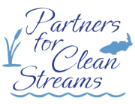 A few years ago, The National Oceanic and Atmospheric Administration (NOAA) awarded PCS with an $800,000 grant to help fuel our economy and create 35 seasonal, part-time and temporary positions. This team of workers focused on habitat restoration within the Maumee Area of Concern – primarily the Ottawa River and Swan Creek Watersheds and the Oak Openings region – with the help of several partners. Our partners, including Metroparks of the Toledo Area, The Nature Conservancy, The University of Toledo, Boy Scouts of America, and City of Toledo, all worked cooperatively with PCS to share the common goal and vision. The Maumee Corps undertook a variety of restoration techniques, such as invasive species management native planting and preparing for prescribed burning, within many types of habitats. The workers also took on re-plant areas devastated by the Emerald Ash Borer with suitable species and stream bank plantings.
A few years ago, The National Oceanic and Atmospheric Administration (NOAA) awarded PCS with an $800,000 grant to help fuel our economy and create 35 seasonal, part-time and temporary positions. This team of workers focused on habitat restoration within the Maumee Area of Concern – primarily the Ottawa River and Swan Creek Watersheds and the Oak Openings region – with the help of several partners. Our partners, including Metroparks of the Toledo Area, The Nature Conservancy, The University of Toledo, Boy Scouts of America, and City of Toledo, all worked cooperatively with PCS to share the common goal and vision. The Maumee Corps undertook a variety of restoration techniques, such as invasive species management native planting and preparing for prescribed burning, within many types of habitats. The workers also took on re-plant areas devastated by the Emerald Ash Borer with suitable species and stream bank plantings.
With a lot of dedication, over 37,000 hours were worked in the Oak Openings region, Swan Creek areas, and the Ottawa River watershed. While the goal was to cover 1,000 acres, our workers treated over 2,309 acres with 878 already considered restored. It will take time and patience, and maybe a little bit more work, to restore the other areas but the habitat is well on its way to being a more suitable habitat for rare species and increasing diversity as well as improving the river systems. We have two more Maumee Corps team members beginning work for this season with The Olander Park System and the University of Toledo to continue the work started there last year. Overall, the Maumee Corps project is highly successful, involving many partners, and teaching skills to the next generation of conservation scientists while greatly improving the region’s ecosystems. One Maumee Corps worker puts it “The Maumee Corps, GLRI grant gave me the opportunity to not only gain experience working with the land management crew…, but allowed me to practice the restoration techniques I learned in my college classes as well. This experience inspired me to further my career goals in the restoration field.” This program was the first one of it’s kind in our area since the original Civilian Conservation Corps made such an impact here in the 1930’s. It is already being used as a model of similar programs led by other environmental organizations. It’s said that imitation is the highest form of flattery!
